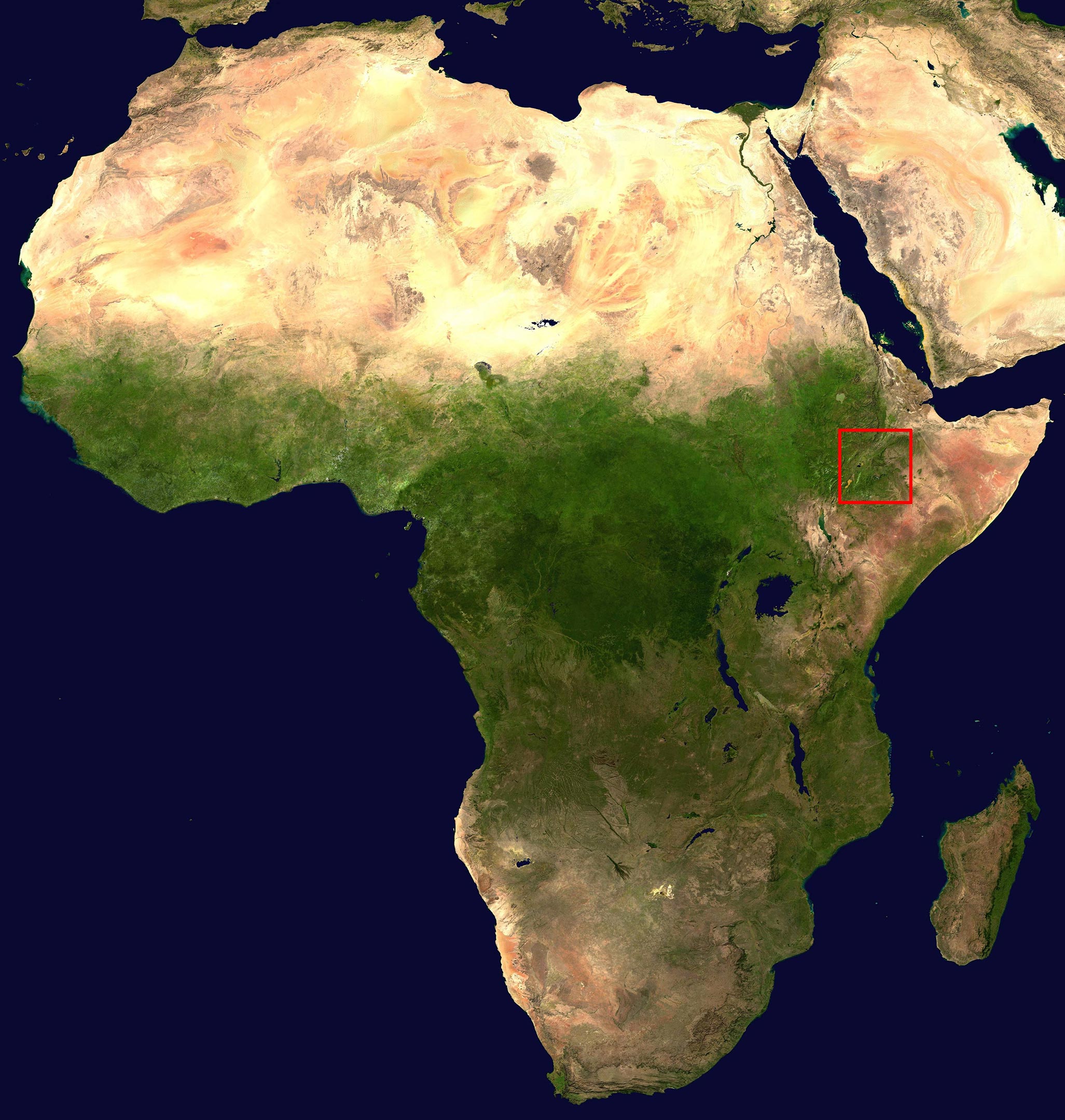
The region is an area of high volcanic activity, and a rich source of early human remains and artifacts such as stone tools.
The age of the oldest fossils in eastern Africa widely recognized as representing our species, Homo sapiens, has long been uncertain.The remains – known as Omo I – were found in Ethiopia in the late 1960s, and scientists have been attempting to date them precisely ever since, by using the chemical fingerprints of volcanic ash layers found above and below the sediments in which the fossils were found.An international team of scientists, led by the University of Cambridge, has reassessed the age of the Omo I remains – and Homo sapiens as a species.Approximate location of the Omo Kibish Formation marked in red.The Omo I remains were found in the Omo Kibish Formation in southwestern Ethiopia, within the East African Rift valley.The region is an area of high volcanic activity, and a rich source of early human remains and artifacts such as stone tools.
By dating the layers of volcanic ash above and below where archaeological and fossil materials are found, scientists identified Omo I as the earliest evidence of our species, Homo sapiens.
Researchers at the Omo Kibish geological formation in southwestern Ethiopia.As part of a four-year project led by Professor Clive Oppenheimer, Vidal and her colleagues have been attempting to date all the major volcanic eruptions in the Ethiopian Rift around the time of the emergence of Homo sapiens, a period known as the late Middle Pleistocene.“Each eruption has its own fingerprint – its own evolutionary story below the surface, which is determined by the pathway the magma followed,” said Vidal.
Omo Kibish Formation in southwestern Ethiopia.“When I received the results and found out that the oldest Homo sapiens from the region was older than previously assumed, I was really excited,” said Vidal.“The Omo Kibish Formation is an extensive sedimentary deposit which has been barely accessed and investigated in the past,” said co-author and co-leader of the field investigation Professor Asfawossen Asrat from Addis Ababa University in Ethiopia, who is currently at BIUST in Botswana.“Our closer look into the stratigraphy of the Omo Kibish Formation, particularly the ash layers, allowed us to push the age of the oldest Homo sapiens in the region to at least 230,000 years.”.
“Unlike other Middle Pleistocene fossils which are thought to belong to the early stages of the Homo sapiens lineage, Omo I possesses unequivocal modern human characteristics, such as a tall and globular cranial vault and a chin,” said co-author Dr.The researchers say that while this study shows a new minimum age for Homo sapiens in eastern Africa, it’s possible that new finds and new studies may extend the age of our species even further back in time.“Our forensic approach provides a new minimum age for Homo sapiens in eastern Africa, but the challenge still remains to provide a cap, a maximum age, for their emergence, which is widely believed to have taken place in this region,” said co-author Professor Christine Lane, head of the Cambridge Tephra Laboratory where much of the work was carried out.Reference: “Age of the oldest known Homo sapiens from eastern Africa” by Céline M.